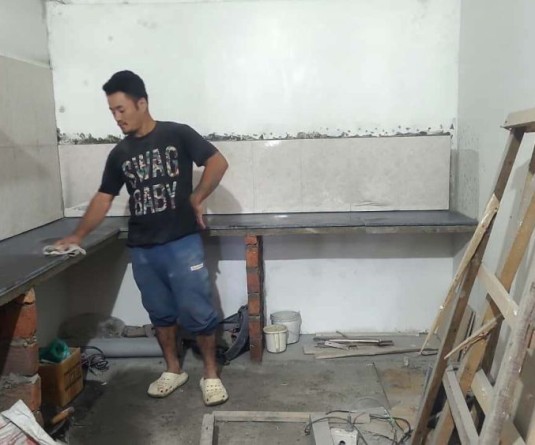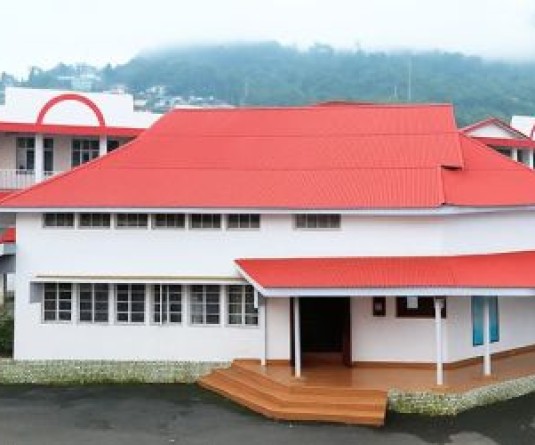hh

Our Correspondent
Kisama | December 7
The North East Zone Cultural Centre (NEZCC) Dimapur today organized a cultural extravaganza of the north eastern states at the Hornbill festival at Kisama in the presence of Dr. Jitendra Singh, Minister of State (IC), Ministry of Development of North East Region (DONER) and Minister of State in Prime Minister Office, personnel, pension and public grievances, atomic energy and space, K. Moses Chalai, secretary NEC and several other dignitaries.
Assam performed Barat Dance. Barat Loka festival is one of the famous festivals known as Konwari Puja, Usha Barat Festival of the Tiwa community of Assam. This festival is celebrated regularly at the foot hills of Tetelia during the full-moon night of the winter season in the presence of King Tetelia. Pati Dhulia dancers and singers coming from different Tiwa villages participates in the Barat Festival. Competitions of Pati Dhul and Gadali Paria songs are generally arranged by the community. This festival is celebrated from the month of Kati to Magh Bihu. The festival begins with the burning of 300 lamps at the inaugural function.
Meghalaya performed Wangala dance. Wangala, a tribal dance of the Garos, is performed during the Wangala festival of Meghalaya. Celebrations are usually spread over two days, though at times it may continue for a week. This dance festival doubles up as an occasion for selecting brides and bride rooms, and is considered to be the most colourful and spectacular festival of the Garo community. The dance performances, led by the troupe leaders, are characterized by vigorous shuffling of feet and graceful body movements held in rhythm by the tunes of native musical instruments.
Sikkim performed Aameay Chyadro. This performance constitutes a medley of two Bhutia foik-songs 'Aameay Chyadro' and 'Khungsaang Thempo.' The first section of the dance expresses the loving relation between a mother and sons and the second section describes and praises the importance of the sun and the snow lion or the Singhi. This type of dance form is performed by the Bhutias of Sikkim in all sorts of occasions.
Manipur performed Cheirol Jagoi (Stick Dance). Cheirol Jagoi is originated from Manipur Thang-Ta for entertainment this presentation is performed by a master skilled stick player handling the sticks of different sizes comprising of various different steps, speedy styles of movements which attracts and enthralls numerous spectators of the world. It is only a special item/sequence to bring out and manifest the shills, experiences and expertise of the artistes.
Manipur also demonstrated Pong Chollom which is performed during the festival of Holi and Thang-Ta.
Mizoram performed Cheraw dance. This is is the most popular and colorful dance of the Mizos. Cheraw dance is performed with long pairs of Horizontal bamboo staves tapped open and close in rhythmic beats by people sitting face to face on the ground while girls in colortul costumes of puanchei, Kawrchel, vakiria and thinna dance in and out between the beats of the bamboo. This dance is now performed in almost all festival occasions. The unique style of the Cheraw is a great fascination in and outside Mizoram because bamboos are used for the Cheraw dance. The dance is also known as bamboo dance.
Assam performed Na Fisha Misawa. It is a tradition of the tribal rural folk of Assam to catch fishes from lakes, river and marshy lands on the eve of every Magh and Bohag Bihu. It is known as community fishing when all the villagers gather on the banks of lakes, rivers and marshy lands to catch the fishes. They use various fish catching instruments like jal, jakhui, polo Khaloi etc. The young men generally sing songs and dance as they catch the fishes and thus it is called as Na Fisha Misawa (fishing dance).
Meghalaya performed harvest dance. This festival is celebrated by the Garo Community of Meghalaya synchronizing with the end of jhum cultivation which lasts for several days. This is also a festival of dance of joy and thanksgiving to god.
During this festival, young boys and girls wear a new look. The occasion is initiated right in the field by a simple but impressive ceremony Known as Rugala Rugala which is then followed by the ceremony of incense burning known as Sasat Soa inside the house of the Chief or the Nokma of the village.
The Chief amidst the burning of incense, beating of drums and the chanting of the people utter a few words of incantation and pours rice beer and sprinkles rice powder over a collection of jhum cultivation products as a offering to the gods. This is immediately followed by drinking, dancing and merry making.
Sikkim performed Beyul Micha (Denzong Charab).
Beyul Micha is the popular Bhutia folk dance. It is performed in praise of Sikkim. A land of legends and endless prayers which is blessed with peace and happiness by great rituals and Gurus. Hence the dance is performed by groups of males and Females with pleasing song of praise and sanctity of this land which is full of holy places where people go and pay respect to the great souls who blessed this land and its people with prosperity and happiness.
Tripura performed Hozagiri dance. Hozagiri dance is the popular and attractive dance of the Reang tribe. Next to the Tripuris, the Reang constitute the second largest group among the tribal population of Tripura. The Reangs like other tribal communities have a distinct art and culture of their own.
Dance form an integral part of their lives. While the theme of the dance remains almost the same as that of other tribes, this dance form of the Reang community is quite different from others. The movements of hands and the upper part of the body is somewhat restricted, where as the movement from their waist to the feet creates a wonderful wave.
The dancers stand on an earthen pitcher with a bottle on their head. A lighted lamp is balanced on the bottle. This dance is performed during a festivals celebrated annually in the month of April to pray to 'Mainuma' the Goddess of wealth.
The Reangs believe that the Goddess is pleased with the singing and dancing, she will bless them with bumper crop.
Arunachal Pradesh performed Aney-Na. This is a popular dance performed by the Aka (Hrusso) tribe living in West Kameng district of Arunachal Pradesh. The pre dominant occupation of the tribal people has been agriculture or jhum cultivation.
This dance is performed after the harvest and its main attraction is during the celebration of Neychi Dou festival of Aka (Hrusso) community of West Kameng district.
The festival is celebrated during the middle part of January. The main motive of the dance is to seek blessing from the God and Goddess and begging forgiveness for the unforeseen mistake that is believed to be committed by the people during the process of the cultivation






